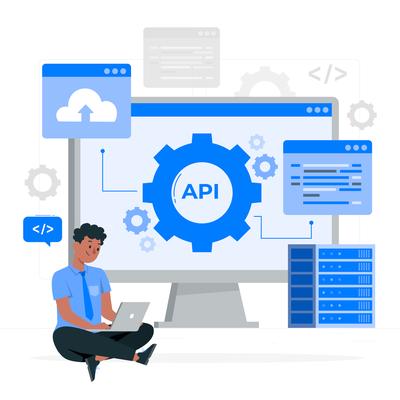Explore the fascinating history of the ls command from its Unix origins to modern Linux …
Node.js and LangChain: Bridging JavaScript and AI Node.js and LangChain: Bridging JavaScript and AI

Summary
Introduction to Node.js and LangChain
In today’s fast-evolving tech landscape, merging web development with artificial intelligence is no longer a futuristic idea—it’s a present-day necessity. Node.js and LangChain combine the rapid, scalable, and event-driven nature of Node.js with the advanced AI capabilities of LangChain. This integration empowers developers to build innovative applications like intelligent chatbots, content generators, and sentiment analysis tools using JavaScript.
Imagine a customer support system that not only answers queries but learns from each interaction, or an automated content generator that produces SEO-friendly articles in real time. These real-life applications illustrate the true potential of combining Node.js with LangChain. In this comprehensive guide, we will dive deep into the integration, showcasing numerous code examples, real-world scenarios, and practical tips to help you harness these technologies effectively.
Expand your knowledge with Revolutionizing DevOps: The Impact of AI and Machine Learning
Understanding Node.js and LangChain Integration
The integration of Node.js and LangChain represents a significant breakthrough for developers aiming to add AI functionalities to their JavaScript applications.
The Core Concepts
Node.js: A robust runtime built on Chrome’s V8 JavaScript engine, Node.js excels in building scalable, non-blocking applications. Its asynchronous nature makes it ideal for handling multiple tasks simultaneously.
LangChain: This framework is designed to help developers leverage large language models (LLMs) such as those provided by OpenAI. LangChain simplifies prompt engineering, response handling, and multi-turn dialogue management.
How They Work Together
Consider Node.js as the foundation of your web server—handling HTTP requests, routing, and backend logic—while LangChain acts as a specialized toolkit for processing natural language. By integrating them, you can offload complex language processing tasks to AI models without compromising the speed and efficiency of your application.
For example, in a customer support scenario, Node.js would manage incoming requests and user sessions, while LangChain would process user queries, generate human-like responses, and even adapt to conversation context over time.
Deepen your understanding in Revolutionizing DevOps: The Impact of AI and Machine Learning
Setting Up Your Environment for Node.js and LangChain
Before building real-life applications, it’s crucial to set up your development environment correctly. This section walks you through the installation of Node.js, creating a project, and integrating LangChain.
Step 1: Installing Node.js
Download and install the latest version of Node.js from nodejs.org. Once installed, verify your installation:
node -v
npm -v
Step 2: Creating a New Project
Create a new project directory and initialize it:
mkdir node-langchain-project
cd node-langchain-project
npm init -y
Step 3: Installing LangChain and Other Dependencies
Install LangChain along with supporting packages:
npm install langchain openai express axios body-parser
Explanation:
- langchain: Core package for AI language processing.
- openai: Enables communication with OpenAI’s language models.
- express: A popular web framework for building Node.js applications.
- axios: A promise-based HTTP client for API requests.
- body-parser: Middleware for handling JSON requests.
With your environment set up, you’re now ready to build applications that leverage both Node.js and LangChain.
Explore this further in Revolutionizing DevOps: The Impact of AI and Machine Learning
Building a Basic Node.js and LangChain Application
To demonstrate the integration, let’s start by building a simple application that sends a prompt to an AI model and returns the generated response. This example introduces the core concepts and sets the stage for more advanced projects.
Creating a Simple AI Response App
Create a file named app.js and add the following code:
// app.js
const express = require('express');
const { OpenAI } = require('langchain/llms/openai');
const { PromptTemplate } = require('langchain/prompts');
const app = express();
const port = process.env.PORT || 3000;
// Endpoint to get an AI-generated response
app.get('/', async (req, res) => {
try {
// Define a basic prompt template
const promptTemplate = new PromptTemplate({
template: "What is one interesting fact about artificial intelligence?",
inputVariables: [],
});
// Initialize OpenAI using LangChain
const openai = new OpenAI({
apiKey: process.env.OPENAI_API_KEY, // Set your API key in the environment variables
temperature: 0.7,
});
// Generate a response using the formatted prompt
const response = await openai.call(promptTemplate.format({}));
res.send(`AI says: ${response}`);
} catch (error) {
console.error("Error during AI call:", error);
res.status(500).send("Internal Server Error");
}
});
app.listen(port, () => {
console.log(`Server running on port ${port}`);
});
Detailed Explanation:
- Express Setup: The Express framework handles incoming HTTP requests.
- PromptTemplate: Creates a simple prompt without dynamic input.
- OpenAI Integration: The OpenAI wrapper sends the prompt to the AI model.
- Endpoint: The root endpoint returns the AI’s response.
Run the application with:
node app.js
Visit http://localhost:3000 in your browser to see the AI-generated response. This basic application forms the foundation upon which more complex and real-life examples will be built.
Discover related concepts in Revolutionizing DevOps: The Impact of AI and Machine Learning
Real-Life Application: Building a Customer Support Chatbot
One of the most compelling real-life applications of Node.js and LangChain is an intelligent customer support chatbot. This chatbot can handle multiple queries, maintain conversation context, and provide instant responses, significantly reducing wait times and improving customer satisfaction.
Setting Up the Chatbot
Create a new file named chatbot.js:
// chatbot.js
const express = require('express');
const bodyParser = require('body-parser');
const { OpenAI } = require('langchain/llms/openai');
const { PromptTemplate } = require('langchain/prompts');
const app = express();
const port = process.env.PORT || 3000;
// Middleware to parse JSON requests
app.use(bodyParser.json());
// In-memory store for conversation histories (in production, use a persistent store)
const conversationHistory = {};
// Chat endpoint to handle conversation
app.post('/chat', async (req, res) => {
try {
const { sessionId, message } = req.body;
if (!sessionId || !message) {
return res.status(400).send("Missing sessionId or message.");
}
// Initialize conversation history for a new session
if (!conversationHistory[sessionId]) {
conversationHistory[sessionId] = [];
}
conversationHistory[sessionId].push({ role: 'user', content: message });
// Build conversation context
const context = conversationHistory[sessionId]
.map(entry => `${entry.role === 'user' ? "User" : "AI"}: ${entry.content}`)
.join("\n");
// Define a dynamic prompt with conversation context
const promptTemplate = new PromptTemplate({
template: "You are a helpful customer support agent. Continue the conversation based on the following context:\n{{context}}\nAI:",
inputVariables: ['context'],
});
const formattedPrompt = promptTemplate.format({ context });
// Initialize the AI model
const openai = new OpenAI({
apiKey: process.env.OPENAI_API_KEY,
temperature: 0.7,
});
// Get the AI response
const response = await openai.call(formattedPrompt);
// Update conversation history with the AI's response
conversationHistory[sessionId].push({ role: 'ai', content: response });
res.send({ response });
} catch (error) {
console.error("Error during chat processing:", error);
res.status(500).send("Chatbot failed to generate a response.");
}
});
app.listen(port, () => {
console.log(`Chatbot server running on port ${port}`);
});
Real-Life Use Case Explanation:
- Customer Support: This chatbot can answer FAQs, troubleshoot common problems, and escalate issues to human agents when necessary.
- Multi-Turn Dialogue: The conversation context is maintained in an in-memory object (consider a database like MongoDB for production).
- Dynamic Prompts: The prompt is dynamically built using previous conversation turns, ensuring context-aware responses.
To test the chatbot, send a POST request to http://localhost:3000/chat with a JSON payload:
{
"sessionId": "user123",
"message": "I need help with my order."
}
The chatbot will return a contextual response, demonstrating its potential in real-world customer service applications.
Uncover more details in 31 Reasons Why DevOps Are Better Lovers (Modern Psychology)
Real-Life Application: AI-Powered Content Generation Platform
Another real-life application of Node.js and LangChain is the development of an AI-powered content generation platform. Such a platform can help marketing teams and content creators generate articles, blog posts, and social media content on the fly.
Building the Content Generator
Create a file named contentGenerator.js:
// contentGenerator.js
const express = require('express');
const bodyParser = require('body-parser');
const { OpenAI } = require('langchain/llms/openai');
const { PromptTemplate } = require('langchain/prompts');
const app = express();
const port = process.env.PORT || 3000;
app.use(bodyParser.json());
app.post('/generate-content', async (req, res) => {
try {
const { topic, tone } = req.body;
if (!topic) {
return res.status(400).send("Missing topic for content generation.");
}
// Define a prompt template for content generation
const promptTemplate = new PromptTemplate({
template: "Write a comprehensive blog post on the topic: '{{topic}}'. Use a {{tone}} tone and include relevant examples.",
inputVariables: ['topic', 'tone'],
});
const formattedPrompt = promptTemplate.format({
topic,
tone: tone || 'neutral'
});
const openai = new OpenAI({
apiKey: process.env.OPENAI_API_KEY,
temperature: 0.65,
});
const content = await openai.call(formattedPrompt);
res.send({ content });
} catch (error) {
console.error("Error generating content:", error);
res.status(500).send("Content generation failed.");
}
});
app.listen(port, () => {
console.log(`Content generation server running on port ${port}`);
});
Real-Life Use Case Explanation:
- Content Creation: This platform can assist content creators in generating drafts, brainstorming ideas, or even creating full-length articles.
- Customization: Users can specify topics and desired tone (e.g., friendly, professional, humorous) to tailor the content to their brand’s voice.
- Scalability: Integrate this service into a larger content management system to automate part of the content creation workflow.
Send a POST request to http://localhost:3000/generate-content with a payload like:
{
"topic": "The Future of Remote Work",
"tone": "informative"
}
The response will include a draft blog post on the given topic, ready for editing and publishing.
Journey deeper into this topic with Revolutionizing DevOps: The Impact of AI and Machine Learning
Real-Life Application: Social Media Sentiment Analysis
Monitoring brand sentiment on social media is critical for businesses. Node.js and LangChain can be used to create an application that analyzes the sentiment of social media posts, helping companies quickly respond to customer feedback.
Developing the Sentiment Analysis Tool
Create a new file called sentimentAnalysis.js:
// sentimentAnalysis.js
const express = require('express');
const bodyParser = require('body-parser');
const { OpenAI } = require('langchain/llms/openai');
const { PromptTemplate } = require('langchain/prompts');
const app = express();
const port = process.env.PORT || 3000;
app.use(bodyParser.json());
app.post('/analyze-sentiment', async (req, res) => {
try {
const { text } = req.body;
if (!text) {
return res.status(400).send("No text provided for sentiment analysis.");
}
// Define a prompt template for sentiment analysis
const promptTemplate = new PromptTemplate({
template: "Analyze the sentiment of the following social media post and determine if it's positive, negative, or neutral:\n\"{{text}}\"",
inputVariables: ['text'],
});
const formattedPrompt = promptTemplate.format({ text });
const openai = new OpenAI({
apiKey: process.env.OPENAI_API_KEY,
temperature: 0.3,
});
const sentiment = await openai.call(formattedPrompt);
res.send({ sentiment });
} catch (error) {
console.error("Error during sentiment analysis:", error);
res.status(500).send("Sentiment analysis failed.");
}
});
app.listen(port, () => {
console.log(`Sentiment analysis server running on port ${port}`);
});
Real-Life Use Case Explanation:
- Brand Monitoring: Companies can use this tool to analyze thousands of social media posts to gauge public sentiment.
- Actionable Insights: By identifying trends—such as a sudden spike in negative sentiment—a business can take swift remedial action.
- Integration: This service can be integrated with dashboards that display real-time analytics for marketing teams.
Test the endpoint with a POST request containing a sample post:
{
"text": "I love the new features in the latest update, but the performance could be better."
}
The response will indicate whether the overall sentiment is positive, negative, or neutral.
Enrich your learning with 31 Reasons Why DevOps Are Better Lovers (Modern Psychology)
Enhancing Performance and Reliability in Real-World Deployments
When deploying AI-powered applications, performance and reliability are paramount. Here are several best practices to ensure your Node.js and LangChain integration performs optimally in production.
Gain comprehensive insights from Bash for SRE: Implementing Google's Reliability Engineering Principles in Shell Scripts
Asynchronous Programming and Concurrency
- Non-blocking Operations: Ensure all AI calls and I/O operations use asynchronous patterns (async/await) to prevent blocking the Node.js event loop.
- Promise Handling: Use
Promise.allfor parallel processing when handling multiple API requests concurrently.
Caching and Rate Limiting
- Caching Responses: For frequently requested data (e.g., sentiment analysis of trending topics), implement caching using Redis or in-memory solutions to reduce repeated API calls.
- Rate Limiting: Protect your endpoints from abuse by using middleware (like
express-rate-limit) to limit the number of requests per IP address.
Robust Error Handling and Monitoring
- Detailed Logging: Integrate logging libraries such as Winston or Morgan to capture and monitor errors.
- Real-Time Monitoring: Use tools like Sentry or New Relic to track application performance and errors in real time, allowing for rapid troubleshooting.
Scaling Strategies
- Horizontal Scaling: Deploy your Node.js applications across multiple instances using process managers like PM2 or container orchestration platforms such as Kubernetes.
- Microservices Architecture: Consider breaking down your application into microservices to isolate workloads and improve maintainability.
Troubleshooting Common Challenges
Despite best practices, challenges may arise when integrating Node.js and LangChain. Here are some common issues and solutions:
Master this concept through Troubleshooting common EC2 issues
API Latency and Timeout Issues
- Problem: Slow response times from the AI API can delay user interactions.
- Solution: Implement retry logic using libraries like axios-retry and set reasonable timeout limits on your HTTP requests.
Prompt Formatting and Context Errors
- Problem: Inaccurate or incomplete prompt formatting may result in suboptimal AI responses.
- Solution: Log the final prompt string before sending it to the API. Use version control for your prompt templates to track improvements over time.
Session Management in Multi-Turn Dialogues
- Problem: Losing context in long conversations can confuse the AI model.
- Solution: Persist conversation history in a database (such as MongoDB or Redis) rather than relying solely on in-memory storage.
Best Practices for Node.js and LangChain Integration
To build robust, real-world applications, adhere to the following best practices:
Delve into specifics at OpenAI Node.js Integration: Complete Developer's Guide [2024]
- Modular Architecture: Keep your application code modular by separating core functionalities (e.g., API calls, prompt handling, session management) into individual modules.
- Testing: Implement thorough unit and integration tests. Tools like Mocha, Jest, or Supertest can help ensure your endpoints and AI interactions work as expected.
- Security: Always secure your API keys using environment variables and use HTTPS for production deployments.
- Documentation: Document your code and prompt templates so that team members can understand and maintain the integration over time.
- Continuous Monitoring: Regularly monitor application performance and update dependencies to ensure compatibility with the latest Node.js and LangChain features.
Future Trends and Real-World Impact
The integration of Node.js and LangChain is only beginning to show its transformative impact across industries. Here are some future trends and real-world impacts:
AI-Driven Business Automation
- Customer Support: Chatbots powered by this integration can dramatically reduce response times and operational costs.
- Marketing: Automated content generation tools can scale content production, allowing brands to maintain an active online presence with minimal manual intervention.
- Data Analysis: Real-time sentiment analysis tools enable companies to make data-driven decisions quickly.
Expanding Applications
- Education: Virtual tutors and interactive learning platforms can personalize education by adapting content in real time.
- Healthcare: AI-powered diagnostic assistants can analyze patient data and assist healthcare professionals in decision-making.
- Finance: Automated systems can monitor market trends and sentiment, helping investors and analysts make informed decisions.
As technology advances, the capabilities of Node.js and LangChain will only expand, paving the way for more sophisticated AI applications that are deeply integrated into our daily lives.
Deepen your understanding in Revolutionizing DevOps: The Impact of AI and Machine Learning
Conclusion: Embracing the Future with Node.js and LangChain
The convergence of Node.js and LangChain is revolutionizing how developers approach AI integration. By harnessing the power of Node.js’s scalable, asynchronous runtime and the advanced language processing capabilities of LangChain, you can build intelligent applications that address real-world challenges—from enhancing customer support and content creation to analyzing public sentiment on social media.
This comprehensive guide has walked you through the fundamentals of setting up your environment, building simple applications, and developing complex, real-world projects with extensive code examples and detailed explanations. Whether you’re deploying a customer support chatbot, an AI content generator, or a sentiment analysis tool, the strategies and examples provided here are designed to help you succeed.
Remember, successful integration requires continuous learning, experimentation, and adaptation to emerging trends. Embrace the power of Node.js and LangChain to build applications that are not only efficient and scalable but also capable of transforming how users interact with technology.
Happy coding, and may your journey into the world of AI-powered JavaScript applications be both inspiring and transformative!
This guide provides a deep dive into the integration of Node.js and LangChain, offering practical examples and real-life applications to help you harness AI for solving complex challenges. By following the detailed steps, best practices, and troubleshooting tips outlined above, you’ll be well-equipped to build robust, intelligent applications that stand out in today’s competitive digital landscape.
Similar Articles
Related Content
More from development
Master the Linux ls command with this comprehensive guide covering basic and advanced options, …
Master the Linux ls command with our task-oriented approach covering everyday file management …
You Might Also Like
Explore 9 innovative methods for Node.js deployments using CI/CD pipelines. Learn how to automate, …
Discover how DevOps integrates with AI to revolutionize software development, focusing on improved …
Explore how AI and machine learning are reshaping DevOps practices. Discover the roles of AIOps and …
Contents
- Introduction to Node.js and LangChain
- Understanding Node.js and LangChain Integration
- Setting Up Your Environment for Node.js and LangChain
- Building a Basic Node.js and LangChain Application
- Real-Life Application: Building a Customer Support Chatbot
- Real-Life Application: AI-Powered Content Generation Platform
- Real-Life Application: Social Media Sentiment Analysis
- Enhancing Performance and Reliability in Real-World Deployments
- Troubleshooting Common Challenges
- Best Practices for Node.js and LangChain Integration
- Future Trends and Real-World Impact
- Conclusion: Embracing the Future with Node.js and LangChain

